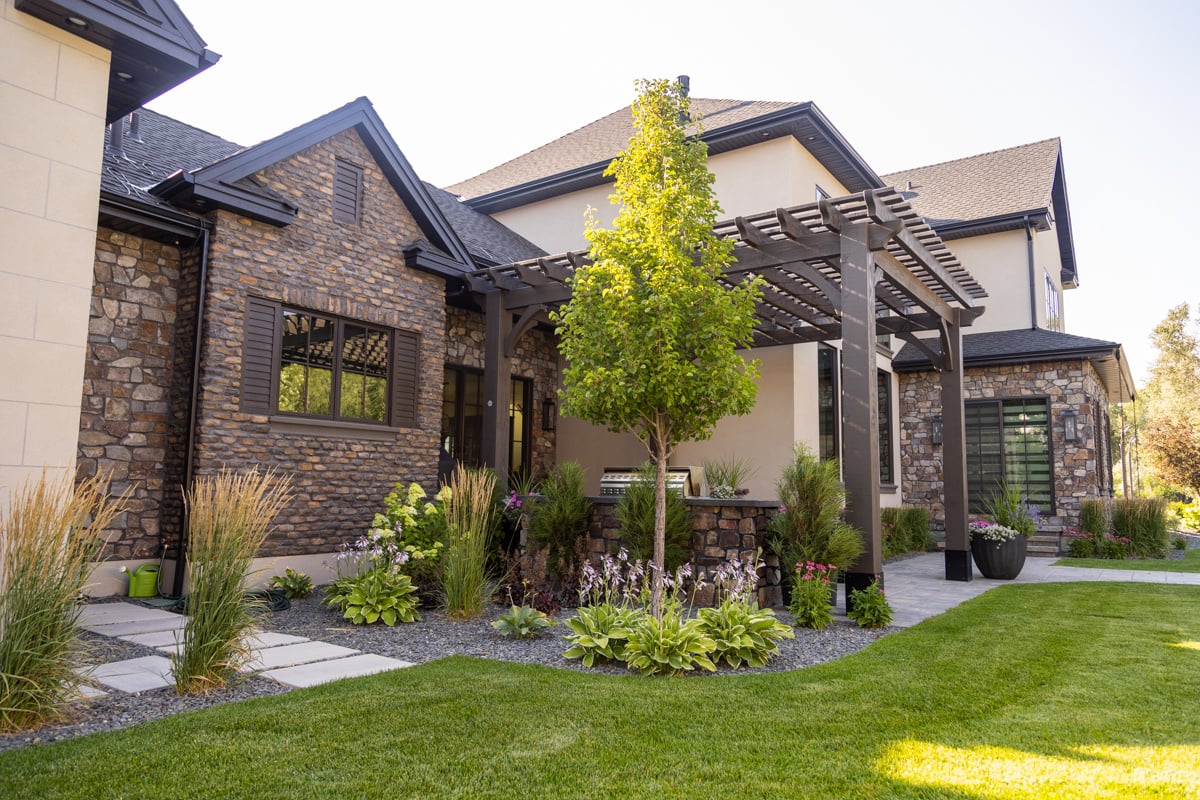
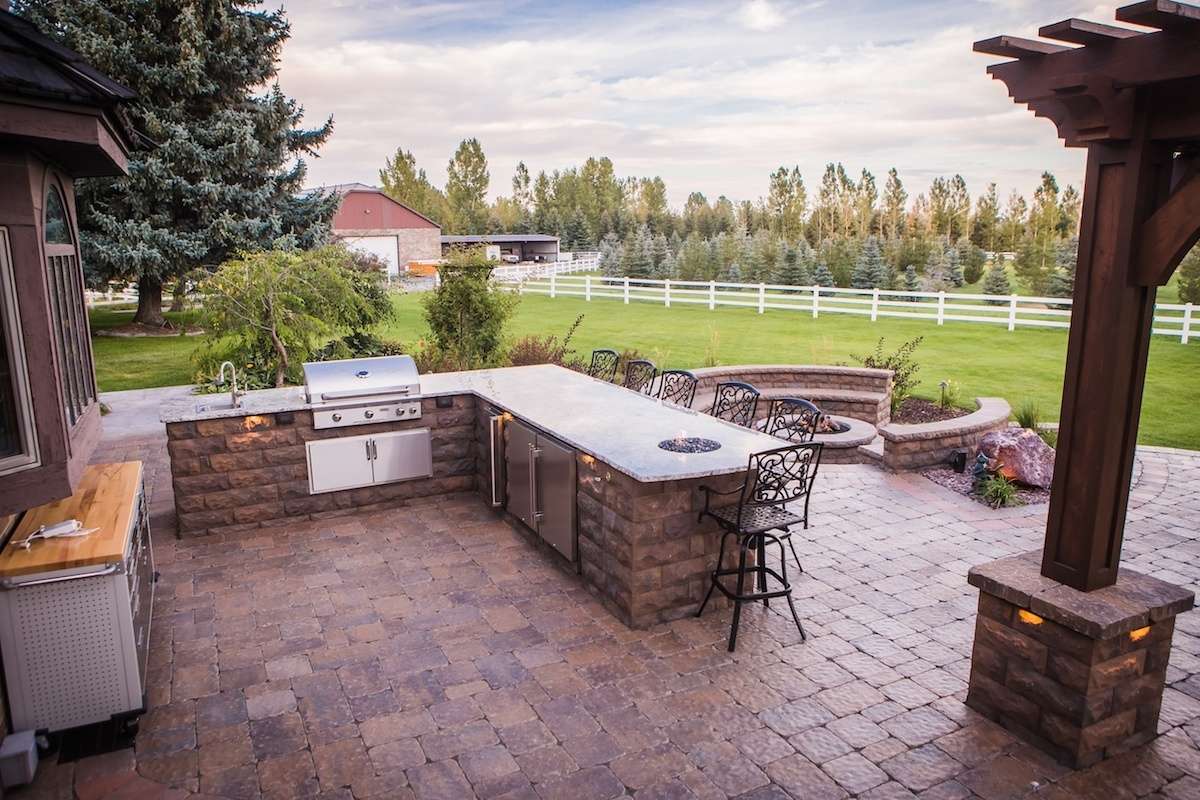
Functional Landscaping: Factors to Consider in Your Landscape Design
Outback Landscape designer Kim Rubert knows firsthand the importance of function, not just beauty, in landscape design.
The garage of the new house she and her husband bought years ago flooded every spring.
Even the pros struggle with frustrations like poor landscape drainage.
Water management is just one of the functional landscape design elements that need to be considered.
Sure, your landscape has to look great. But it also has to work great.
In this blog we'll discuss the important pieces of a functional landscape design, including:
- Drainage and Water Management
- Fire Pit Function
- Proper Plant Placement
- Windbreaks for Your Landscape
- Landscape Privacy Screening
Landscape Function First
Rubert starts asking about landscape function before anything else when she sits down with a new customer to talk about their landscape design.
How do you live? What do you like to do?
Do you have kids? Pets? Does your family enjoy sports? Do you entertain a lot?
The answers help her narrow in on how the landscape should function — not just how it will look.
Do you need an outdoor kitchen? Enough grass to kick around a soccer ball? A play area? A place for pets to be comfortable?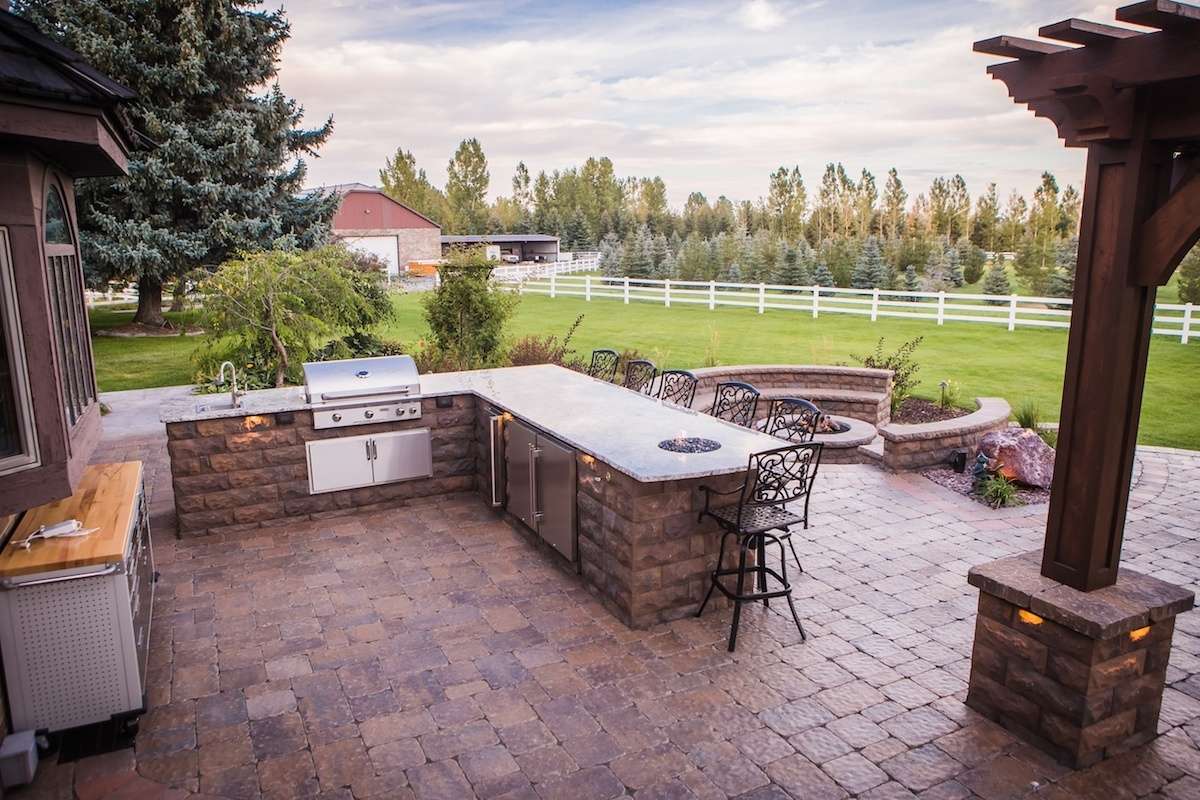 The prettiest yard, the most impressive flowers, the most expensive patio won’t do you any good if it doesn’t work for your lifestyle. Or if it just plain doesn’t work.
The prettiest yard, the most impressive flowers, the most expensive patio won’t do you any good if it doesn’t work for your lifestyle. Or if it just plain doesn’t work.
Drainage and Water Management
In functional landscaping, water flows naturally away from your house and garage, not toward it.
Rubert sees this problem a lot with new patio installation.
If installers don’t grade the area correctly, water backs up and causes flooding or damage.
“Water can’t penetrate a hard surface like a patio the way it does a garden bed,” she says.
The most awesome, high-end patio isn’t so great if it means your basement floods with every heavy rain.
Fire Pit Function
It’s easy to get caught up in the excitement of a new fire pit.
Wine and cheese by the flickering flames! Cozy conversations with friends on chilly evenings! S’mores!
Function first.
Put that fire pit too close to a bedroom window and you’ll have smoke-scented sheets.
Rubert considers functional landscaping elements like wind direction and the fire pit’s distance from the house — not just what cool material it should be.
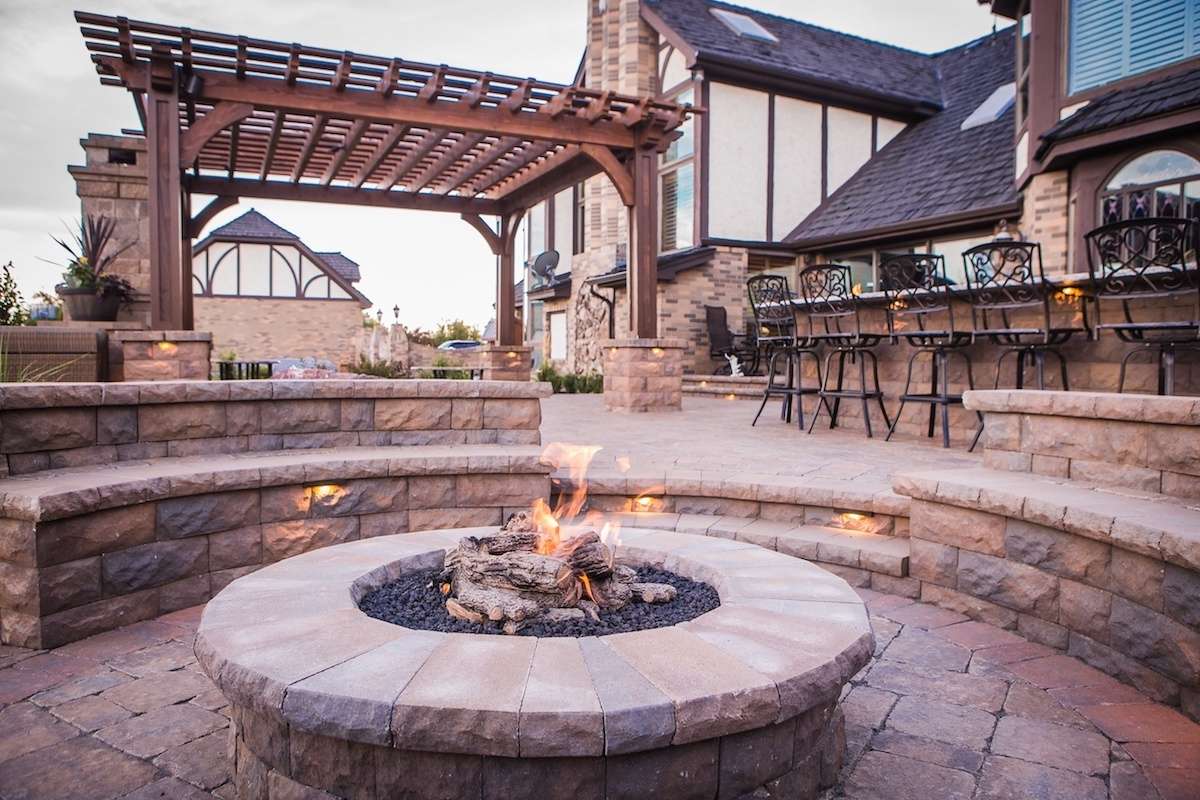 If the fire pit is set back away from your house, does it need a stand of trees or a screen of plant material to make it feel cozy?
If the fire pit is set back away from your house, does it need a stand of trees or a screen of plant material to make it feel cozy?
How will you actually use your fire pit? How it will function will help you decide if it should be fueled by gas or wood.
How rustic are you? Do you love the idea of throwing logs on the fire, watching the sparks fly, and rustling up foil pouches of potatoes and onions, cowboy style?
Then a wood burning pit is perfect for you. A wood burning fire pit offers a campfire feel and emits more heat for cooking.
Or are you more likely to stroll out to your fire pit in white pants holding a cheese board and a bottle of wine?
You might prefer to just flip a switch for the flames. A natural gas fire pit lights quickly and easily and doesn’t produce smoke or sparks.
Proper Plant Placement
It’s easy to get carried away by the amazing potential of plants. So many to consider! All those colors! Bring on the blooms!
Landscape function first.
It’s crucial to choose plants that are well suited and happy where you plop them. Then they’ll flourish.
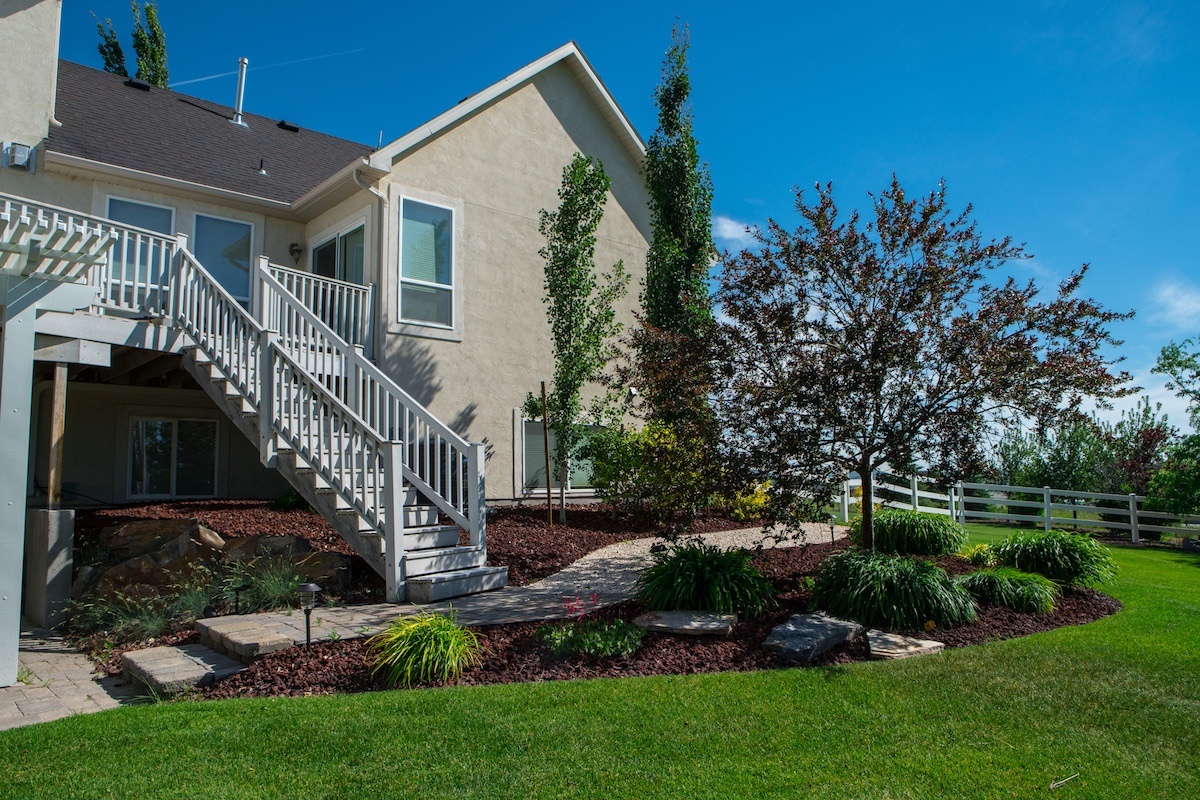 Ignore functional landscape design, and you’re setting your green friends up for overcrowding, disease, insect damage, or just plain dying of thirst.
Ignore functional landscape design, and you’re setting your green friends up for overcrowding, disease, insect damage, or just plain dying of thirst.
Rubert puts a lot of thought into where plants are placed.
Functional landscape design is about more than just coordinating colors and textures so everything looks great.
Some professional tips on plant placement:
- Don’t crowd plants too close together. They need to breathe.
- Don’t plant trees or shrubs too close to a building or other structure. Think about their size at maturity — not what they look like now.
- Don’t mix plants with different light and water needs. You don’t want a shade-loving plant next to a sun-loving plant. One of them will suffer. Cluster drought-tolerant plants together so they can share the same watering needs.
- Think about your lifestyle, not just pretty plants you like. Need privacy? The right plants can offer a nice natural screen. Have dogs? Look for sturdy ground covers that can stand up to scampering paws. Curious toddlers? Read plant labels to be sure your plants aren’t toxic.
- Remember winter. Don’t plant fragile shrubs or ornamental trees near the edge of the house where snow will fall from the roof and crush them.
- Don’t plant fragile shrubs where snow plows will damage them. Consider perennials for near driveways and sidewalks instead.
- A properly planted tree can shade a house in the summer, helping to keep it cool. That saves you money on air conditioning. Plant deciduous trees along the south- and west-facing sides of your house. In the summer, they’ll provide shade for your home. In the winter, the sun's rays will still be able to warm up your house.
Windbreaks for Your Landscape
Here in Idaho, the winds can really howl.
Evergreen trees and shrubs can create a natural windbreak to block icy winter winds.
Strategically planting trees and shrubs near your house can help lower your home's heating costs — a great example of functional landscape design.
Landscape Privacy Screening
Evergreens work great to create natural privacy screening for your yard year round.
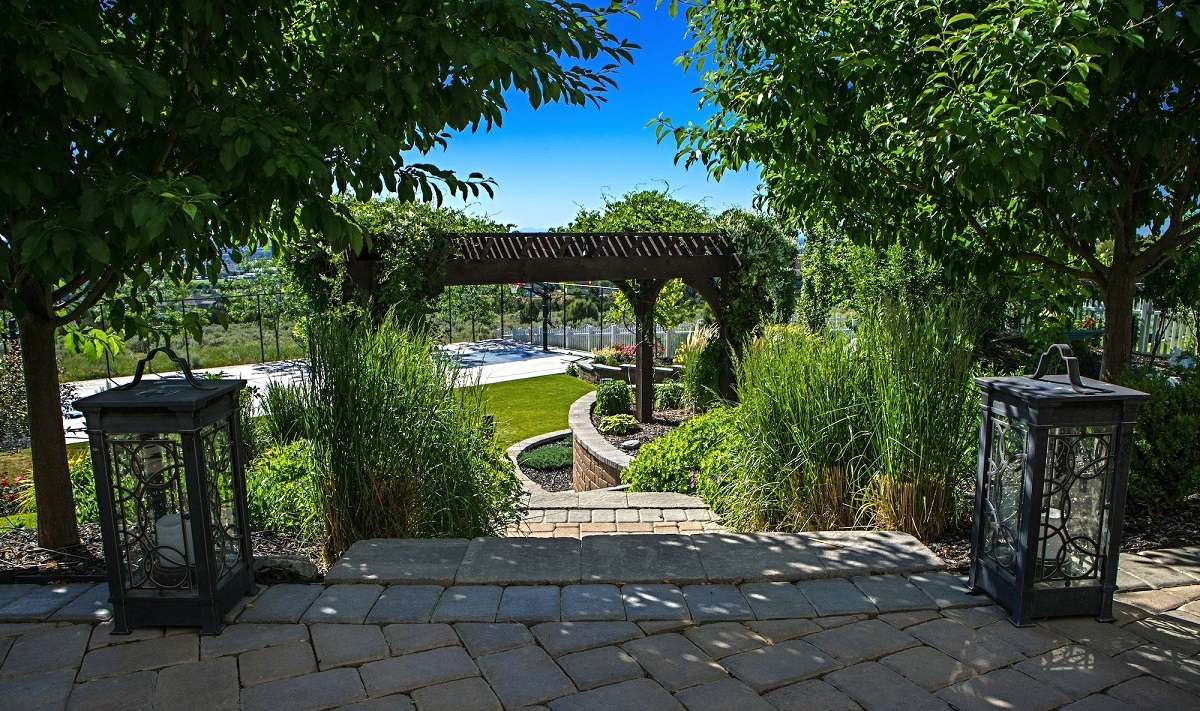 If you only need privacy screening during the warm weather, when you’re out on your patio or using your pool, there are lots of great options, from graceful ornamental grasses to flowering shrubs.
If you only need privacy screening during the warm weather, when you’re out on your patio or using your pool, there are lots of great options, from graceful ornamental grasses to flowering shrubs.
Some beautiful, and functional, choices for landscape privacy screening:
- Swedish aspen is hardy, great for screening and offers pretty fall color.
- Green Giant arborvitae is a vigorous, fast-growing evergreen that grows as much as three feet per year. Its rich green foliage is resistant to wind once it’s established, and it can withstand heavy ice or snow.
- Red Twig dogwood is deciduous, so it’s a good choice if you’re mostly concerned about privacy for your deck or patio in the summer months, but you’ll be rewarded with its striking red twigs in the winter.
- Maiden grass offers great privacy with its full, fluffy growth of 5 or 6 feet tall and 4 to 5 feet wide.
Trust Your Functional Landscape Design to Outback
At Outback Landscape, we’re fanatics about function.
We don’t just want your property to look fantastic — we want it to function perfectly, too.
Located in Idaho Falls, Idaho, we serve residential and commercial properties in Idaho Falls, Rexburg and Pocatello, Idaho, as well as Bonneville, Madison and Bannock counties.
Contact Outback Landscape at 208-656-3220, or fill out the contact form to schedule a consultation.
We’d love to hear from you.
If You're Looking For a Sign, This is It.
Seriously, that lawn isn't getting any better on it's own. Mrs. Jones just called the HOA on you
.jpg?width=480&name=Chase%20Coates%20Team%20Portrait%202%20(2).jpg)
Chase Coates
Chase Coates is the owner of Outback Landscape in Idaho Falls, Idaho.


Brick Pavers vs Stamped Concrete: Pros, Cons, and Costs
.jpg)

